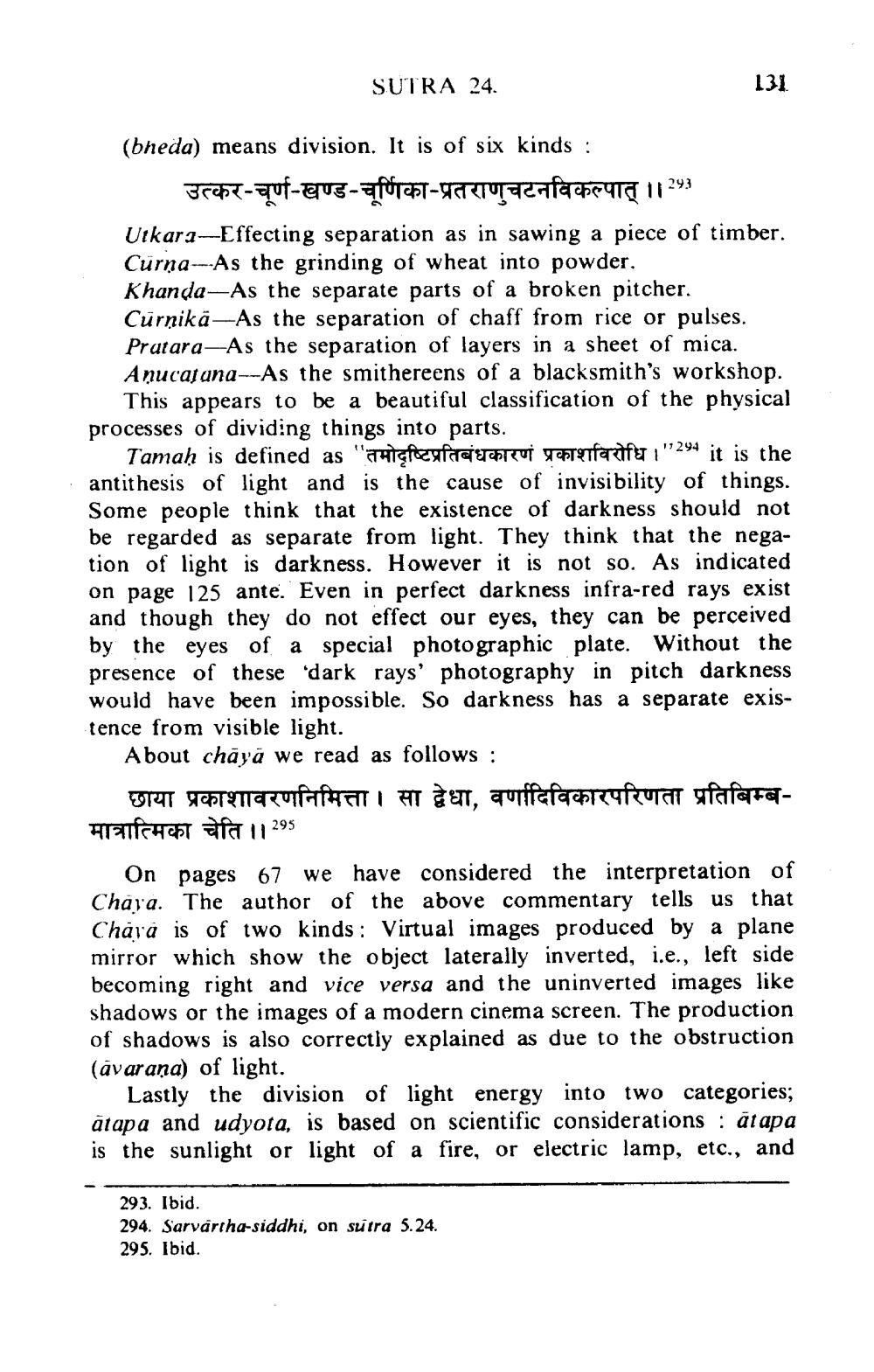________________
SUTRA 24.
131
(bheda) means division. It is of six kinds :
35c57-auf-aus-aforcat-T eafa cena 11293 Urkara--Effecting separation as in sawing a piece of timber. Curņa-As the grinding of wheat into powder. Khanda-As the separate parts of a broken pitcher. Cürnika–As the separation of chaff from rice or pulses. Pratara-As the separation of layers in a sheet of mica. Anucajana--As the smithereens of a blacksmith's workshop.
This appears to be a beautiful classification of the physical processes of dividing things into parts.
Tamaḥ is defined as "atste freecaTUT yatayfartfy;"294 it is the antithesis of light and is the cause of invisibility of things. Some people think that the existence of darkness should not be regarded as separate from light. They think that the negation of light is darkness. However it is not so. As indicated on page 125 ante. Even in perfect darkness infra-red rays exist and though they do not effect our eyes, they can be perceived by the eyes of a special photographic plate. Without the presence of these 'dark rays' photography in pitch darkness would have been impossible. So darkness has a separate existence from visible light.
About chāyā we read as follows :
छाया प्रकाशावरणनिमित्ता। सा द्वेधा, वर्णादिविकारपरिणता प्रतिबिम्बHECHICHT afat 11 295
On pages 67 we have considered the interpretation of Chara. The author of the above commentary tells us that Chara is of two kinds : Virtual images produced by a plane mirror which show the object laterally inverted, i.e., left side becoming right and vice versa and the uninverted images like shadows or the images of a modern cinema screen. The production of shadows is also correctly explained as due to the obstruction (avarana) of light.
Lastly the division of light energy into two categories; ätapa and udyota, is based on scientific considerations : ātapa is the sunlight or light of a fire, or electric lamp, etc., and
293. Ibid. 294. Sarvårtha-siddhi, on sutra 5.24. 295. Ibid.




